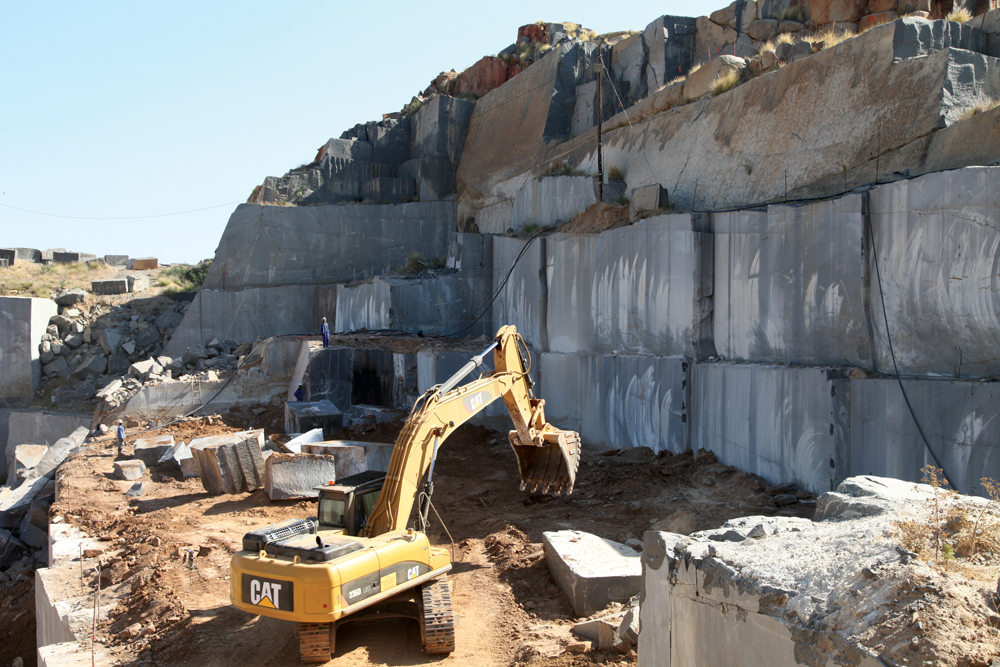Journeying Via Granite Quarries in South Africa: A Visual Odyssey
Journeying Via Granite Quarries in South Africa: A Visual Odyssey
Blog Article
Unveiling the Mysteries of Granite Quarrying: Where Stamina and Sophistication Meet
The globe of granite quarrying is a world where the raw toughness of nature converges with human artistry to develop frameworks that stand the examination of time with an air of style. From the depths of quarries to the meticulous sprucing up in workshops, the procedure of changing granite into building marvels is an intricate dance of custom and advancement. As we peer into the depths of this old craft, we start to discover the surprise details that shape the very significance of our built atmosphere.
The Origins of Granite Quarrying
In the annals of building background, the beginnings of granite quarrying are shrouded in a tapestry of ancient workmanship and geological wonders. Going back to old Egypt and Mesopotamia, the extraction of granite from quarries noted the start of a journey that would ultimately bring about the production of some of the world's most renowned frameworks.
Granite quarrying's roots can be traced to the skilled craftsmens that acknowledged the stone's toughness and aesthetic charm. With a combination of primitive tools and large decision, these early quarry employees unearthed granite blocks that would become the foundation of worlds.
As worlds developed, so did the techniques of quarrying granite. The Romans, renowned for their design expertise, developed advanced techniques for removing granite to construct monoliths, temples, and roads that stood the test of time.
The legacy of these ancient quarrying techniques proceeds to form contemporary style, with granite remaining a symbol of toughness and beauty in construction projects around the world. (granite quarries in south africa)
Tools of the Quarrying Trade
The development of granite quarrying methods from ancient worlds to modern-day times highlights the essential role played by the devices of the quarrying trade in forming the market's practices. In old times, quarrying tools were simple, often including knives, hammers, and wedges made from products like bronze or iron. These devices called for considerable manpower and time to extract granite blocks from quarries.

Additionally, the introduction of pneumatically-driven you can try here tools and high-powered equipment has substantially lowered the physical labor required in quarrying operations, enhancing employee safety and performance. As the quarrying market remains to innovate, the tools of the trade stay at the their website center of driving progress and forming the future of granite removal.
Drawing Out Blocks of Granite
Using precision machinery and progressed techniques, the extraction of granite blocks from quarries has come to be an advanced procedure in the modern quarrying market. Regulated blowing up techniques are after that employed to damage apart the granite into workable areas.

Sprucing Up and Completing Techniques
To achieve a perfect surface area on granite blocks, competent craftsmens use a series of meticulous sprucing up and completing methods. After the first removal and forming procedures, the granite obstructs undergo an extensive sprucing up phase to improve their natural charm and longevity.
In enhancement to polishing, completing strategies are applied to additional refine the granite's look. By very carefully selecting and using these brightening and ending up techniques, craftsmens can transform raw granite blocks into beautiful items that showcase both strength and elegance.

Ecological Effect and Sustainability
With the growing emphasis on ecological awareness in the industry, granite quarrying methods are increasingly looked at for their impact on natural deposits and long-term sustainability. Quarrying for granite can have considerable ecological implications. The removal procedure commonly includes using heavy equipment, dynamites, and large amounts of water, bring about environment devastation, dirt disintegration, and water pollution. Additionally, the transportation of granite from quarries to processing centers generates carbon discharges, even important site more contributing to ecological deterioration. granite quarries in south africa.
To reduce these impacts and make sure sustainability in granite quarrying, industry stakeholders are taking on different steps. Carrying out sophisticated modern technologies to minimize power consumption and water usage, redeeming quarried land for environmental repair, and promoting responsible sourcing methods are some strategies being employed. Certifications such as the Woodland Stewardship Council (FSC) and the Management in Energy and Environmental Layout (LEED) help customers determine environmentally pleasant granite products.
Conclusion
To conclude, granite quarrying is a procedure that needs specialized tools and strategies to extract blocks of granite and polish them to a high level of finish. While the ecological impact of quarrying can be significant, efforts are being made to improve sustainability methods in the industry. On the whole, granite quarrying is a fragile balance in between using the toughness and style of this natural stone while lessening its influence on the environment.
Report this page